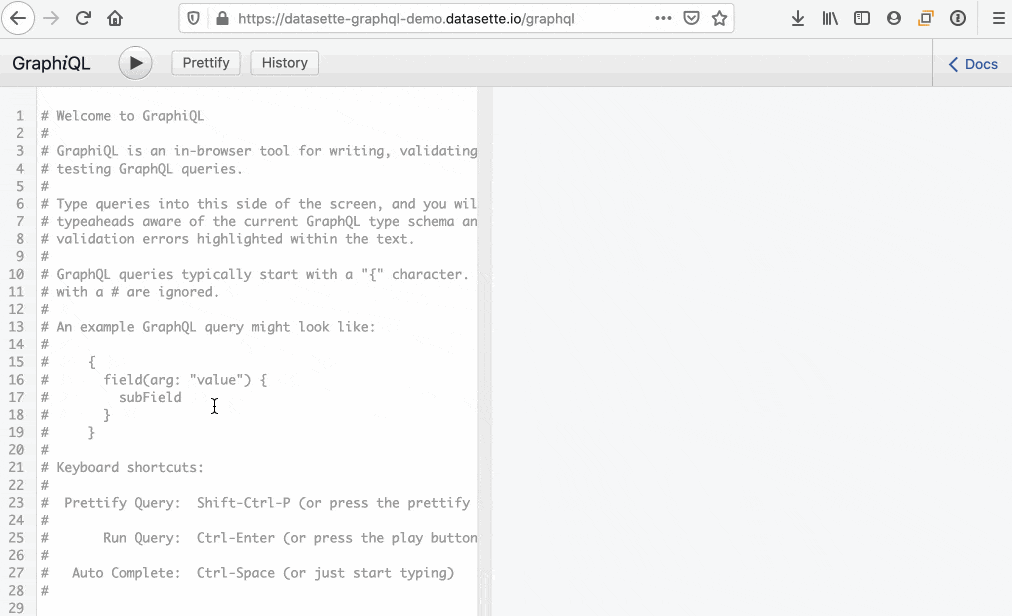Almost since the day of the Referendum, the Brexit process has gone round in circles with the same issues resurfacing, and the same contradictions and paradoxes recurring. That continues to be the case, but the repetitions can be misleading in two ways. One is that with each re-run some new evidence emerges to re-enforce the underlying issue or contradiction. The other is that, as the end of the transition period gets closer, each iteration of the circle makes the matter in question more urgent. In the past, I’ve used
the metaphor of the Mobius strip to capture these repetitions, but perhaps a better image is that of a thread being screwed inexorably tighter.
Freeports and chemicalsThis week has seen several examples. Freeports have for years been touted as a benefit of Brexit, and
became government policy when Boris Johnson became Prime Minister, with a consultation exercise launched last February. I
discussed the issue at that time and won’t repeat that analysis here, except to say that it pointed to the very mixed evidence of their benefit, even in their ‘non-EU’ form. Last week saw
another outing of the argument for their virtues but the very same day
new research from the UK Trade Policy Observatory showed these
to be “almost non-existent” (£). If this is to be a major component of post-transition trade and industrial policy, it is misplaced.
If freeports will not provide an economic boost, the dangers of Brexit to the economically and strategically vital
chemicals industry were again laid bare (£) in the latest of a series of excellent reports by Peter Foster on the practicalities of Brexit. The industry is the UK’s second largest manufacturing sector and its trade and supply chains are massively tied to the EU. These dangers have always been incipient because of the decision to leave the European Chemicals Agency (ECHA) and the REACH regulations it oversees, but under Theresa May there had been a plan to seek some form of Associate Membership.
That might or might not have succeeded (a
House of Lords Report in 2018, which also sets out in clear detail the entire ECHA/REACH issue, was doubtful), but under Johnson’s even more hard line approach,
complete regulatory independence is now the policy. This is going to be hugely costly (£1 billion, according to Foster’s report) and bureaucratically cumbersome however it is done, and the more so if no agreement is reached with the EU on accessing ECHA data – which is doubtful. In short, no one yet knows how it is going to work or whether it will be ready in time for the end of transition, and that’s less than five months away.
But the real kicker is that even if it all goes ahead, what in effect will have happened is to a very large extent a replication of the existing regulatory regime with the sole ‘advantage’ of it being badged British. Indeed, it’s an example of one of the many things that the UK’s budget contribution was paying for, though not included in the crude accounting that dominated the Referendum campaign. Its replication is also an example of how, in practice, Brexit Britain will be pulled by the gravitational force of EU regulation because REACH is also, increasingly,
a global standard.
This is the purely theoretical ‘sovereignty’ which is being regained; the costs to businesses, trade and jobs, which are real, are the price. It is a paradigm case of what Brexit is going to mean in practice,
as has been clear since August 2017 – back when all we knew about Brexit was that it meant Brexit – when the provisions of the (then) Data Protection Bill were outlined.
Round-up of other newsWe have also seen updates on the
objections of Kent residents to the new Brexit lorry parks plus the news that
Operation Brock is to be revived for the end of the transition (as for
Holyhead, goodness knows
how its problems will be dealt with), new
warnings of food shortages in Northern Ireland because of the Irish Sea border, new warnings of
an ‘environmental governance gap’ at the end of the transition, the revival of government
plans for stockpiling medicines in preparation for possible disruptions,
a new CBI survey showing business concern about, and lack of preparedness for, the end of the transition period, and the latest culture war volley in the elevation of
prominent Brexiters to the House of Lords (forgotten, now, is the Brexiters’ insistence that it is crucial that our laws be made by those the people can vote out of office). As with the list of some of last week’s developments
in last week’s post, the sheer diversity of complex problems is striking.
As for the latest good news about Brexit, that’s easily dealt with: there is none. Some might propose that the
imminent UK trade deal with Japan is an exception but, although we don’t yet know the detail, it
isn’t likely to be significantly different (£) to the EU-Japan deal the UK is currently part of. It’s certainly true that not doing such a deal would have been damaging, but that just means that this story is ‘not bad news’ rather than being ‘good news’ - despite the
jubilance of the Brexit press, of which we will have more when the agreement is signed (and, note, this deal is, at Japanese insistence, a
speedy re-negotiation rather than a roll over,
to which Japan would not agree). It is also possible, as mentioned in
a recent post, that if and when the UK and the EU reach a trade agreement then
a further, more extensive, deal with Japan might follow.
Similarly, are we really meant to
welcome today’s news
that up to £355 million is to be spent to support new systems and processes for trade between Great Britain and Northern Ireland? That may be helpful to Northern Ireland’s businesses – though
there are many questions as to how, whether and when it will work – and if it was offsetting the damage of a natural disaster might in that sense be welcome. But Brexit is self-inflicted, and all along it was denied that this, or any, damage would occur.
So if good news means something unequivocally good that is happening as a result of Brexit, and which wouldn’t have happened without Brexit then we are still waiting for it.
The significance of Iain Duncan SmithIn the face of this, it might be expected, in any rational polity, that those who have championed Brexit and its unalloyed advantages would now be starting to express some alarm about – perhaps even some contrition for – what they have foisted on us. And in a way they are – but it is a way that is neither rational, nor moral, nor honest. Witness how this week we have seen veteran arch-Brexiter Iain Duncan Smith
bemoaning the financial commitments signed up to in the Withdrawal Agreement (WA).
It’s a story with multiple layers of absurdity and disingenuity. He complains that
“in the fine print, unnoticed by many” of the WA is
a £160 billion bill for EU loans. But this is the WA which was Johnson’s great ‘oven ready deal’ that was presented to the voters at the 2019 Election and which, afterwards, Duncan Smith enthusiastically voted for in the House of Commons. That vote on the Withdrawal Agreement Bill was rushed through, but did he then join the calls for more scrutiny of “the fine print”? No. On the contrary
he said “if there is anything about this arrangement that we have not now debated and thrashed to death, I would love to know what it is”.
So he fully supported it, but apparently didn’t understand its implications which it was his job to scrutinise and to which he now objects, and argued against further scrutiny. But – the final ridiculous twist – the £160 billion story
isn’t really true anyway (it is based on the effectively zero possibility of every loan made by the European Investment Bank being defaulted on simultaneously).
It’s easy – almost obligatory - to mock this depressing farrago of stupidity and lies, but to do so misses its deeper significance, which is two-fold.
First, it is the latest salvo in the Brexit Ultras’ attempt to disown the entirety of the WA. In
a post immediately after the 2019 election I flagged up the likelihood that they would do this, and have since recorded how it is becoming a
growing, concerted campaign, which carries
profound dangers of international pariahdom. It will intensify through this autumn, and reach a crescendo if there is no trade deal.
Second, and more broadly, it is the latest indication of the truly tragic fate that Brexiters have inflicted on Britain, whereby they insist that Brexit must be done or else the will of the people is betrayed, but also insist that any actual way that Brexit is done is a betrayal of the will of the people. It is a paradox from which there is no escape, and which dooms us to years, probably decades, of culture war.
Culture war ‘refugees’One effect of that culture war is to produce ‘refugees’. Again, it’s been obvious from the beginning that Britain would suffer an exodus of people alienated by Brexit. Most obviously that means
EU nationals in the UK who both for reasons of practical uncertainty and cultural affront no longer wish to be here. It also means UK nationals, and again for both economic and cultural reasons – those who see Britain headed for economic danger but who also feel politically exiled by Brexit.
Inevitably, those most likely to leave are those with the skills to do so easily. Anecdotally, including from my own experience, this has been underway since 2016 but this week saw the first hard evidence of a brain drain as regards
UK nationals moving to the EU (though it is still partial, and it will be a while before we know the full effect, which will also be on emigration to non-EU countries; it can be expected that rates of UK emigration to the EU are now peaking, as after transition freedom of movement and associated rights will cease).
That this is a ‘brain drain’ – a term we have only rarely heard in the UK
since the 1970s though
in June 2017 I warned it was in prospect – is significant because it indicates that this is another economic cost of Brexit. But it also reflects some crucial issues in the underlying
demographics of the Brexit vote in which both post-compulsory education and being economically active associated with voting remain, whilst the converse was true for leave voters.
The consequence of this has become
the new ‘unsayable’ in the political correctness of Brexit. It means that those who actually have to deal with the practical consequences of Brexit do not greatly overlap with those who chose it. That can’t be a condescending comment to make, since Brexiters
themselves constantly say that the remainers are the elite. And what does an elite do, other than run things? Of course, they aren’t for the most part plutocrats, tycoons or even big business leaders (all of whom, by definition, aren’t very numerous). Rather, they are the private and public sector managers, the professionals, scientists, entrepreneurs, academics, game designers, tech workers, musicians and so on.
In the main they aren’t high born – most probably have working-class parents, many may even consider themselves to be working-class – nor are they necessarily very well-paid. What Brexit has done is to spit in their faces. Not so much because of the Referendum result but because of the ‘winner takes all’ refusal to enact a compromise form to reflect the narrow result. And more than anything because of the constant insults since the vote. They are now open game for every taunt. They have been told every day for four years that they are metropolitan elitists, in the pay of the EU, exploiters of Bulgarian nannies or Polish plumbers, cry-babies, saboteurs, traitors, and enemies of the people. And, constantly, they are told that if they ‘love the EU so much’ then they should go and live there. So it’s not particularly surprising that they are doing just that if they can (or, as
seems to be happening with the Civil Service, resigning rather than be used as “political punchbags”).
The culture war on the middle classIt used to be a cliché that any History exam paper answer on any period about any country could gain marks by reference to ‘the rising middle class’. Brexit has in effect declared culture war on Britain’s middle-class – or at least the most productive, active parts of it. It’s that which is leading skilled people to leave or to withdraw from public life. Yet at the same time it is they who are charged with actually dealing with Brexit since, of course, most of them are not in a position to emigrate or resign.
For it is not the archetypal Brexit-voting coastal town pensioner who thinks that immigration has gone too far, is fed up with being told what to do by Brussels and just wants his country back who has to manage social care provision for his peers. It’s his, again archetypal, remain-voting grand-daughter with a social science degree who works in local government, is desperate as she can no longer recruit EU workers, has had her hopes of further study in the Netherlands dashed and her relationship with her Dutch boyfriend jeopardised. The horrible achievement of the Brexiters has been to configure the grandfather as an ‘
ordinary, decent person’ who has ‘
taken revenge on his remoaner elitist’ grand-daughter.
By setting up that bogus – but vicious - cultural conflict, Brexiters have potentially set in train something much more dangerous. It’s obvious to anyone paying attention that we’re at the start of an
unemployment bloodbath with, daily,
new redundancy announcements because of Covid-19 and it’s going to be exacerbated by Brexit, especially when the transition period ends. Traditionally, the socially liberal middle classes were happy – or, if not happy, felt a moral obligation – to support through taxes the unemployed, as a kind of implicit social contract.
A broken social contract?I’m not sure that will be so true anymore for those who, whilst not able to join the brain drain, now feel like exiles in their own country. Whenever some adverse effect of Brexit is reported social media posts immediately focus on who voted for it – so, for example, the current stories about Kent lorry parks, in a county where the majority voted for Brexit, are not viewed sympathetically. Stories about
the concerns of people in Sunderland or
Cornwall about the effects of Brexit get similar treatment. The response is invariably to point out, often gleefully, that a majority in those areas voted for Brexit so they must accept the consequences.
I don’t defend those sentiments: leave voters were misled, and worse, by the Referendum campaign and
years of media poison and, anyway, the adverse effects of Brexit are not going to smartly target leave voters but spare remainers. Moreover, whilst
remainers certainly have no obligation to ‘get behind Brexit’, they need not make their own contribution to prolonging the culture war. And, in any case, it would be a cruelly moralistic world if we all got punished for every mistake we made. But, defensible or not, those responses are real and can be read every day.
Perhaps they are not widely shared, and represent only a vocal sliver of remainer opinion. But if these sentiments are more extensively held, as I suspect they are, this means that the economically inactive and low-skill demographic and the ‘left behind’ regions that voted for Brexit will no longer be seen by the liberal middle class as deserving of support. It will be said that they have got what they voted for, and will have to live with it.
That, after all, is the logical consequence of the Brexiters’ ‘elitist’ narrative: they chose to say that leave voters were ‘the people’ and remain voters weren’t. They infected Britain with this culture war as a tactic to win the Referendum. So, harsh as such remainer ‘vengefulness’ may be, it does grow from soil cultivated by leading Brexiters. For that matter, the first part of my critique, above, of this vengefulness is what Brexiters insist to be the elitist condescension of denying that leavers knew what they were voting for.
Yet as I said
in a tweet which – by my modest standards – went viral this week, the proposition that voters in 2016, when Brexit had no detailed or settled definition, knew exactly what they were voting for hardly sits easily with Duncan Smith’s claim that, equipped with the detailed Withdrawal Agreement in 2019, he didn’t understand what he was voting for.
















































































